Why Cleaning Your Air Conditioner Filter is Important
Benefits of Regular Cleaning
Regularly cleaning your air conditioner (AC) filter is essential for maintaining the overall performance of your HVAC system. An unclean filter can obstruct airflow, making your AC unit work harder and reducing its efficiency. By cleaning your filter, you can enhance the airflow and ensure that the cool air is evenly distributed throughout your home. This leads to lower energy bills, as your AC won’t need to work as hard to achieve the desired temperature.
Additionally, cleaning the filter extends the lifespan of your air conditioner. It prevents debris buildup that can strain the system, leading to costly repairs or premature replacement. A clean filter also ensures that your AC operates quietly, without any annoying buzzing or rattling noises caused by blocked airflow.
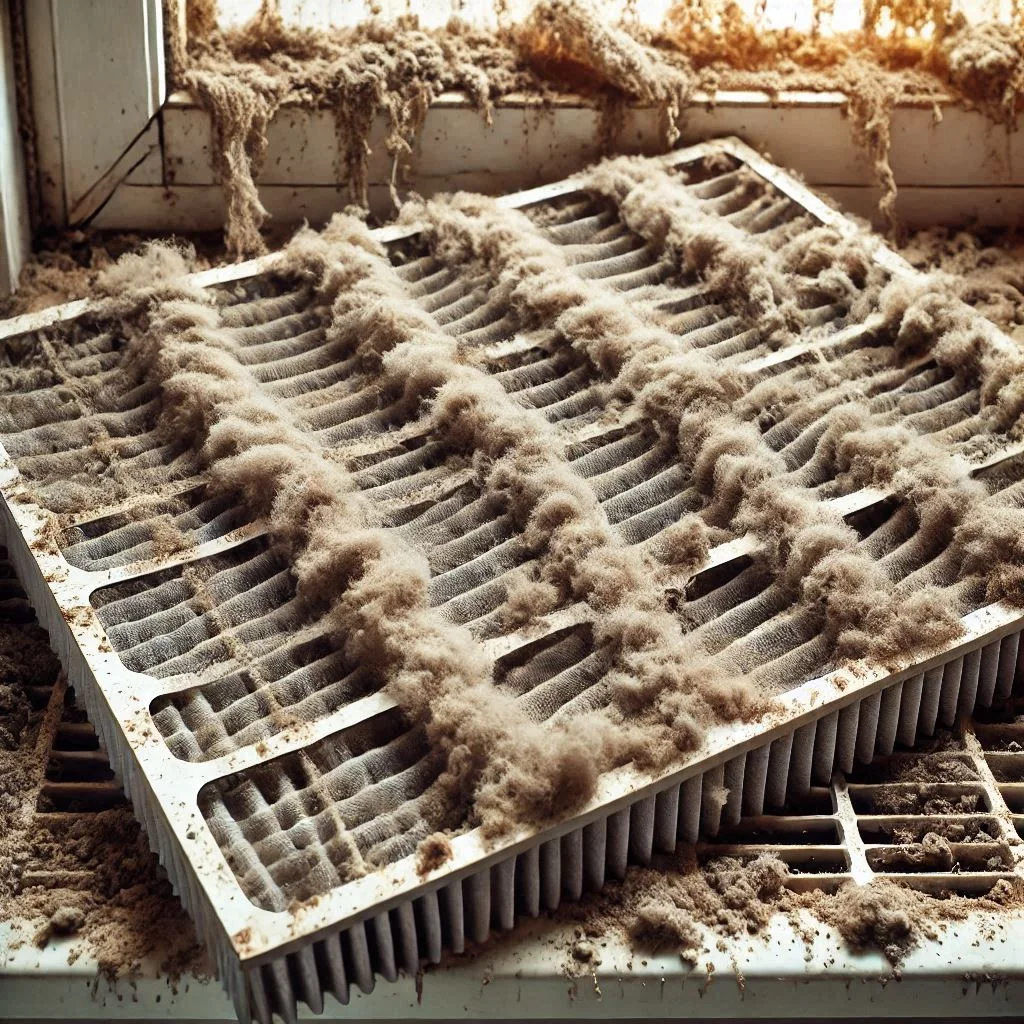
Impact on Efficiency and Air Flow
One of the main reasons to regularly clean your air conditioner filter is the significant impact it has on both efficiency and airflow. When the filter becomes clogged with dust, dirt, and debris, it restricts airflow, forcing your AC unit to work harder to cool your space. This reduced airflow not only decreases your unit’s cooling efficiency but also causes it to consume more energy, raising your electricity bills.
A clean filter, on the other hand, allows for proper airflow, which makes it easier for the AC to maintain the set temperature. As the airflow improves, the overall efficiency of the system increases, ensuring that your air conditioner is running optimally. This improvement in efficiency can lead to noticeable energy savings over time, making regular cleaning a smart investment.
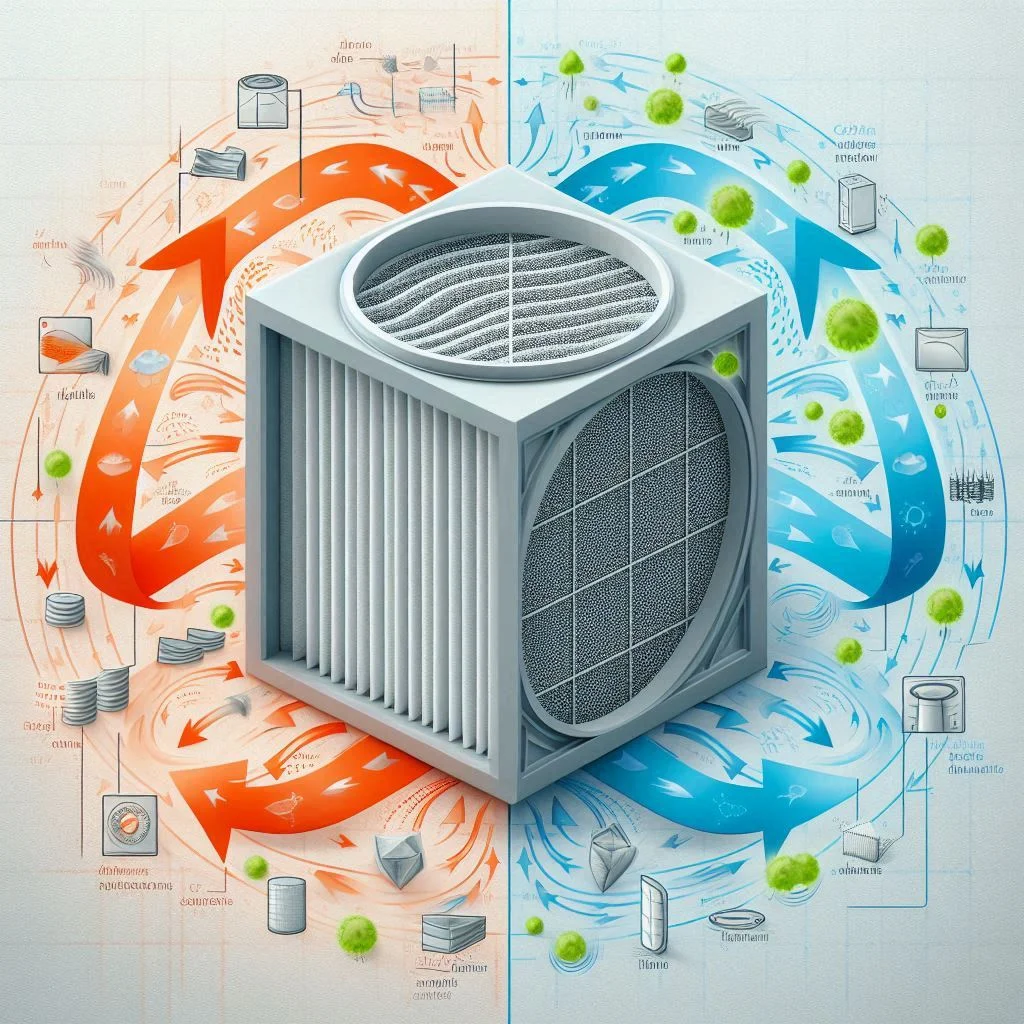
Preventing Health Issues
An often overlooked benefit of cleaning your air conditioner filter is the improvement in indoor air quality, which can significantly affect your health. Over time, dust, dirt, pollen, and other allergens can accumulate in a dirty filter. As the air conditioner circulates air throughout your home, it can release these particles back into the air, triggering allergies or asthma symptoms, especially in sensitive individuals.
By regularly cleaning your air filter, you reduce the accumulation of these harmful particles, improving the air quality in your home. Clean air not only helps you breathe easier but also promotes a healthier environment, reducing the risk of respiratory issues, headaches, and other health problems related to poor air quality.
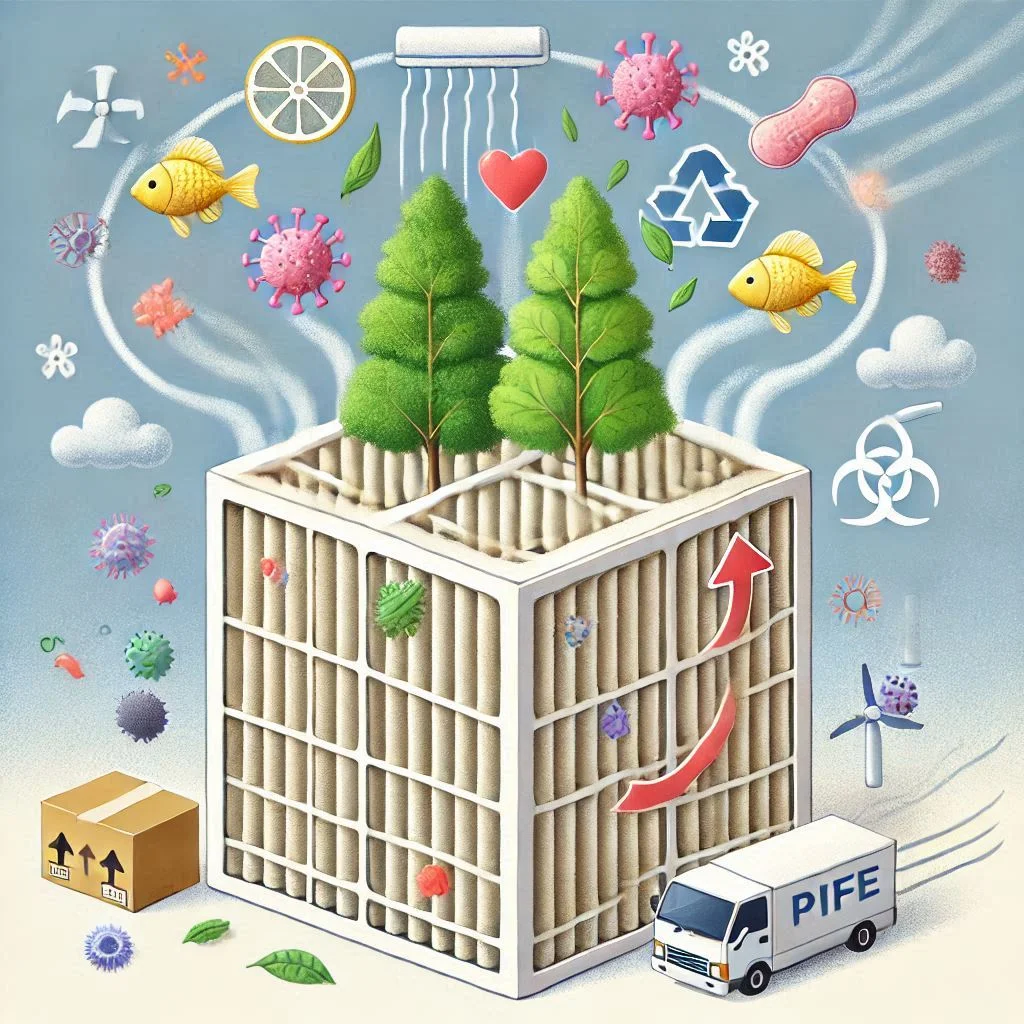
Tools and Materials You’ll Need
Equipment / Tools
When cleaning your air conditioner filter, it’s essential to have the right tools to ensure you perform the job effectively and safely. Using the appropriate tools not only makes the process easier but also prevents any potential damage to your filter or the AC unit.
- Screwdriver
Some air conditioner units require screws to be removed in order to access the filter. Depending on the model, you may need a flat-head or Phillips screwdriver. A compact screwdriver with interchangeable heads will make this task easier. - Vacuum Cleaner with Hose Attachment
A vacuum cleaner equipped with a hose and soft brush attachment is an excellent tool for removing loose dust and debris from the filter. Use the hose gently to vacuum both sides of the filter without damaging its surface. - Soft Brush
A small, soft brush such as a paintbrush or upholstery brush is ideal for loosening dirt and dust from the filter. It helps reach corners and tight spaces without damaging the filter’s material. - Bucket or Basin
For washable filters, you will need a bucket or basin to soak the filter in soapy water. This helps loosen any tough grime that a vacuum or brush might not be able to remove. - Cloth or Towel
After cleaning the filter, a clean towel or cloth is essential for drying the filter before reinstalling it. Avoid reinstalling a wet filter, as it can lead to mold growth or damage the unit.
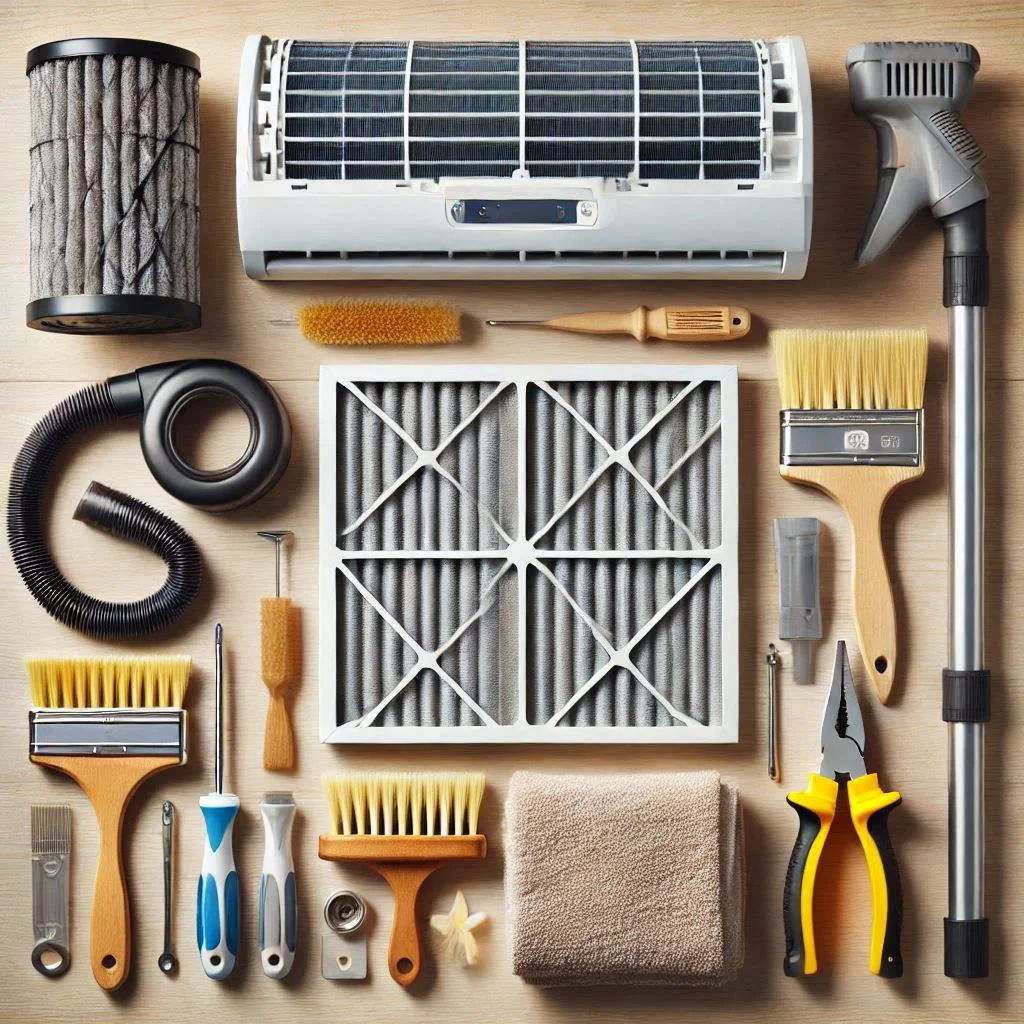
Materials for Cleaning
In addition to the necessary tools, you’ll need the right cleaning materials to ensure the filter is properly cleaned. Using the right products helps improve the filter’s effectiveness and ensures it stays in good condition.
- Mild Soap or Detergent
A mild soap or dish detergent mixed with warm water is ideal for washing your filter. Harsh chemicals can damage the filter’s material and reduce its effectiveness. Always choose a gentle detergent to avoid causing any harm to the filter. - Warm Water
Warm water is best for cleaning most air conditioner filters. Hot water can damage the filter, especially if it’s made of foam or paper, so lukewarm water is the safest option. - Disinfectant Spray
To prevent mold or bacteria buildup, it’s a good idea to use a disinfectant spray on the filter after cleaning. This will help keep the air in your home fresh and healthy. - Compressed Air (Optional)
For stubborn dirt, compressed air can be used to blow out debris that’s deeply embedded in the filter’s mesh. This is especially useful for filters that can’t be washed.
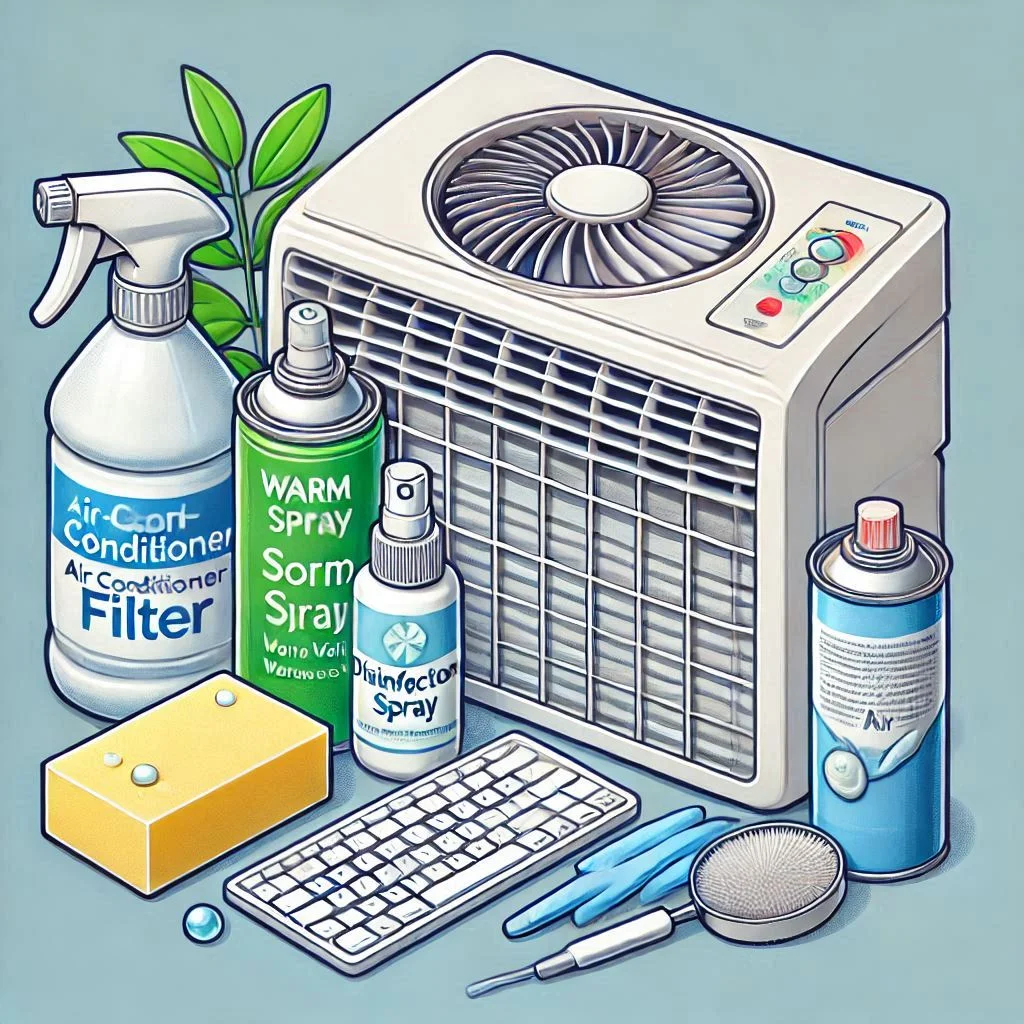
Safety Precautions
While cleaning your air conditioner filter is a relatively simple task, safety should always be a priority. Taking the proper precautions ensures that you complete the task safely and prevent any damage to the AC unit or injury.
- Turn Off the Power
Before you begin cleaning, always turn off the power to the air conditioner. This prevents the possibility of electrical shocks while working on the unit. - Wear Protective Gear
When handling dirty filters, it’s best to wear gloves to protect your hands from dust and debris. If you’re using cleaning chemicals or compressed air, consider wearing a mask or goggles to avoid inhaling dust or spray fumes. - Avoid Getting Water on Electrical Components
Be cautious not to get any water or cleaning materials on electrical components of your air conditioner. If water reaches the internal electrical parts, it could cause a short circuit or damage to the unit. - Handle Filters Gently
AC filters can be fragile, especially reusable or washable filters. Avoid bending, folding, or applying excessive force when cleaning, as this can damage the filter and reduce its efficiency.
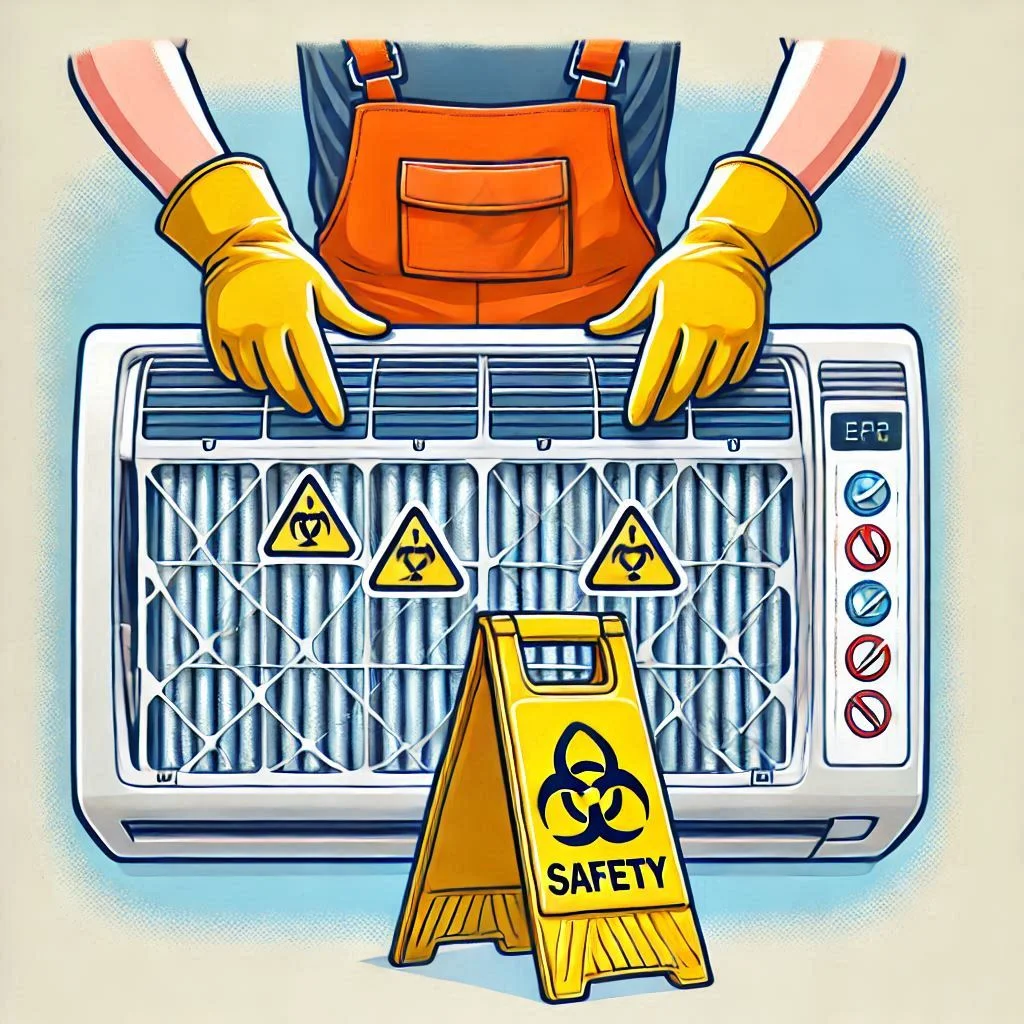
Step-by-Step Guide to Cleaning an Air Conditioner Filter
Turn Off the Air Conditioner
Before beginning any maintenance work on your air conditioner, always ensure the unit is powered off. This is the first and most crucial step in the cleaning process. Turning off the air conditioner helps avoid electrical shocks and ensures your safety while handling the filter. It also prevents the AC from running while you’re working on it, avoiding any potential damage to the system.
To power off the unit, either turn it off using the remote control or the wall-mounted thermostat. If possible, it’s a good idea to unplug the unit or turn off the circuit breaker to eliminate any electrical risks entirely.
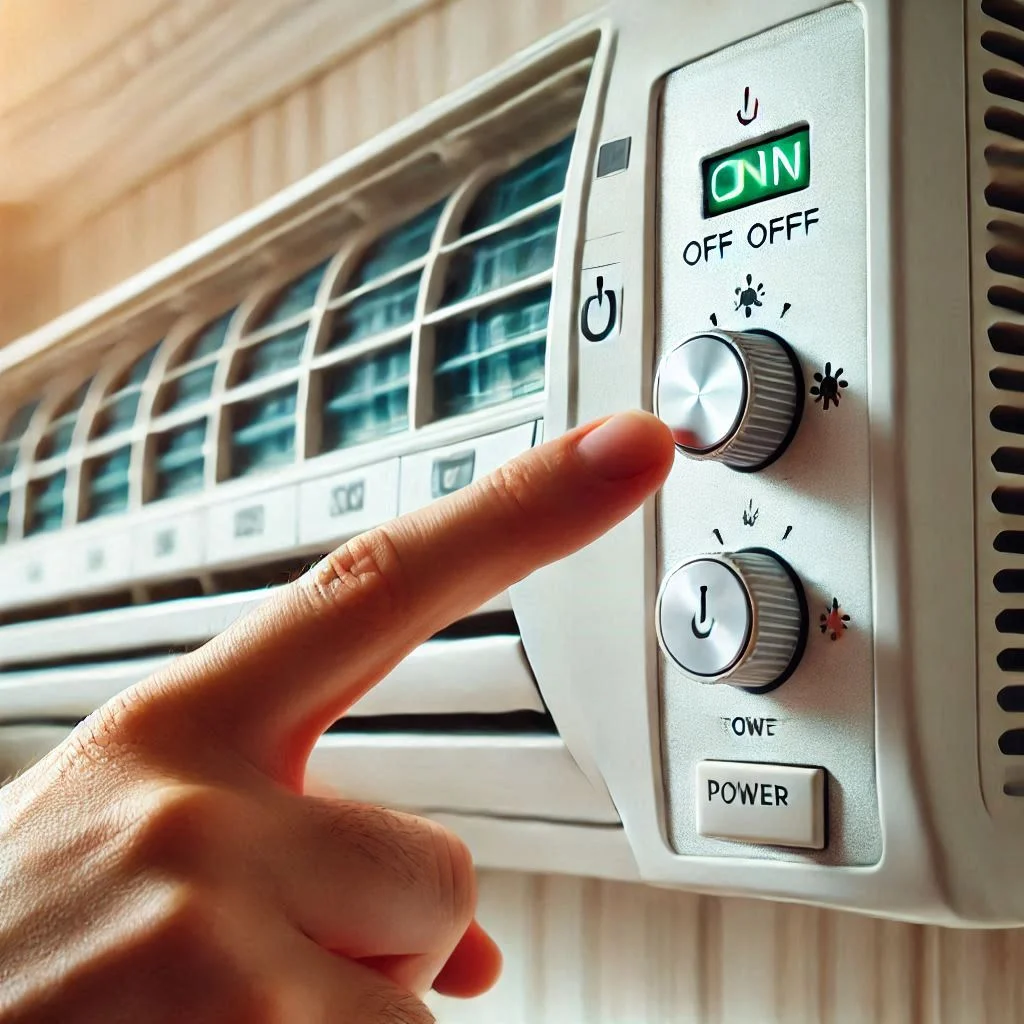
Remove the AC Filter
Once the air conditioner is off, the next step is to remove the filter. Filters are usually located in the air intake area of your AC unit. Depending on the model, you may need to open a cover, unscrew a panel, or simply slide the filter out.
If your filter is difficult to remove, refer to the manufacturer’s manual for guidance on how to safely access and remove it. Be careful while handling the filter, especially if it is made of delicate materials, to avoid damaging it.
For window or portable air conditioners, the process may be slightly different. Always refer to your unit’s specific instructions.
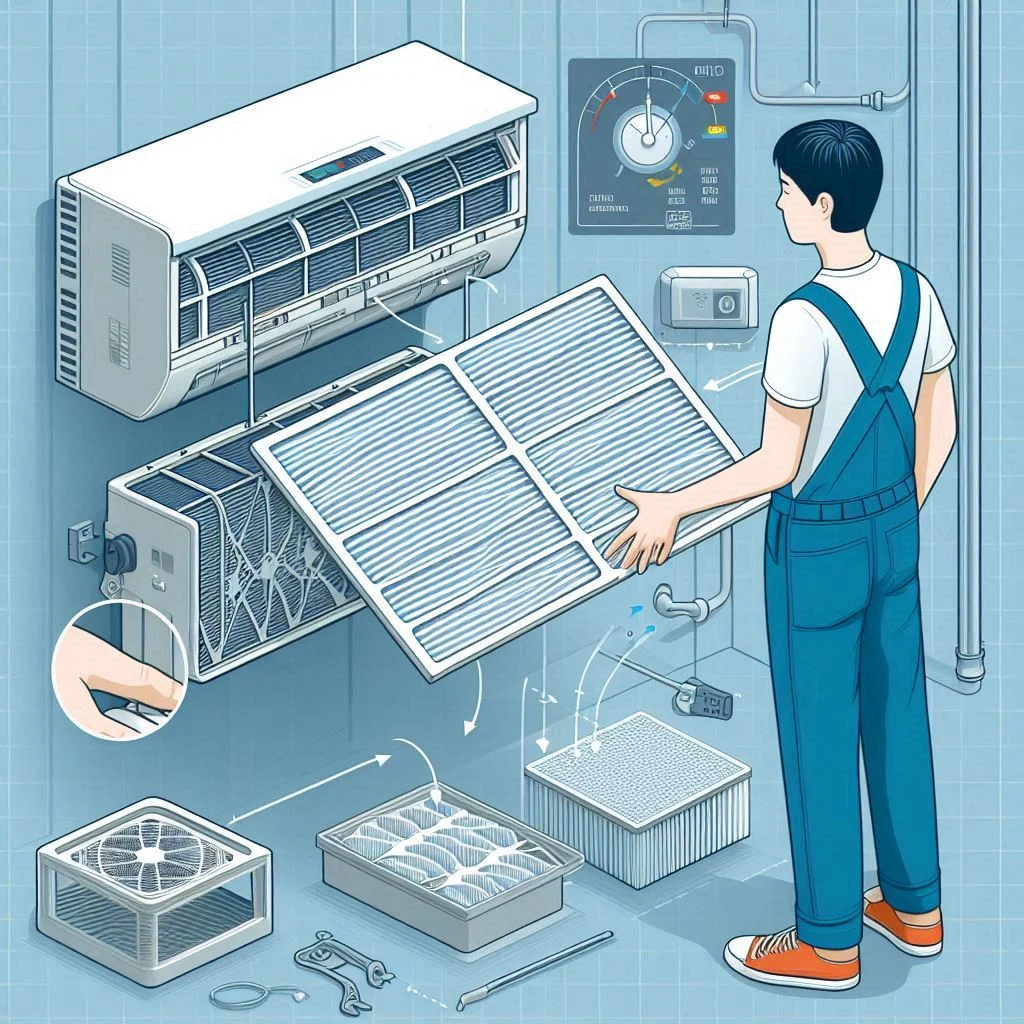
Vacuum the Filter
After removing the filter, it’s time to begin the cleaning process. Use a vacuum cleaner with a hose attachment to gently vacuum both sides of the filter. Vacuuming is the easiest way to remove loose dirt, dust, and debris from the filter surface. Be sure to run the vacuum over the entire filter to capture as much debris as possible.
If the filter is clogged with significant dirt, vacuuming will help reduce the buildup before you wash it. Be gentle while vacuuming to avoid damaging the filter material.
For washable filters, be extra cautious not to bend or crush the filter while vacuuming.
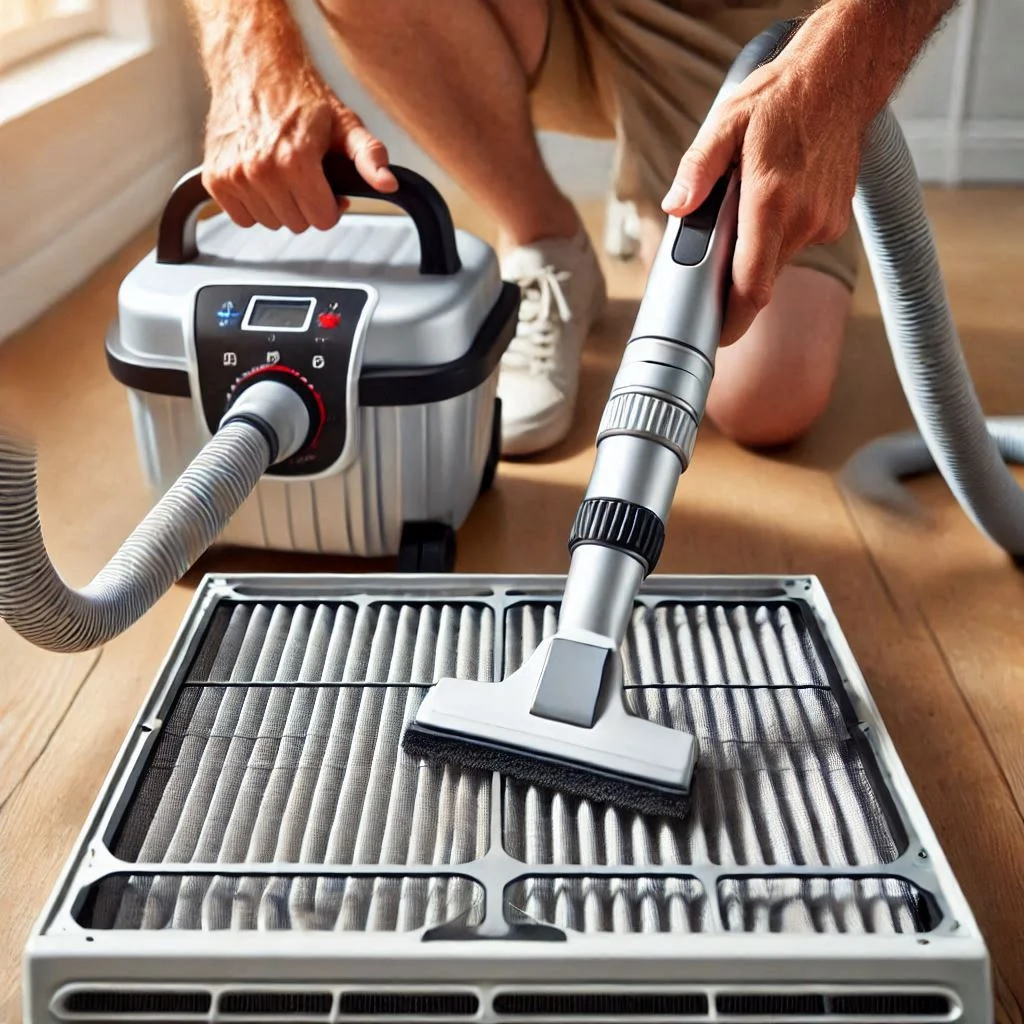
Wash the Filter
After vacuuming the filter, it’s time for a deeper clean. Fill a bucket or basin with warm water and add a small amount of mild soap or detergent. Avoid harsh chemicals as they can damage the filter material. Place the filter into the soapy water and allow it to soak for 10–15 minutes to loosen any stubborn dirt and grime.
Use a soft brush or cloth to scrub the filter gently, especially in areas where dirt has built up. Be careful not to apply too much pressure, as this can cause the filter to bend or tear. After scrubbing, rinse the filter thoroughly with clean water to remove all soap residue.
For reusable filters, this step is especially important to ensure the filter is in optimal condition for continued use.
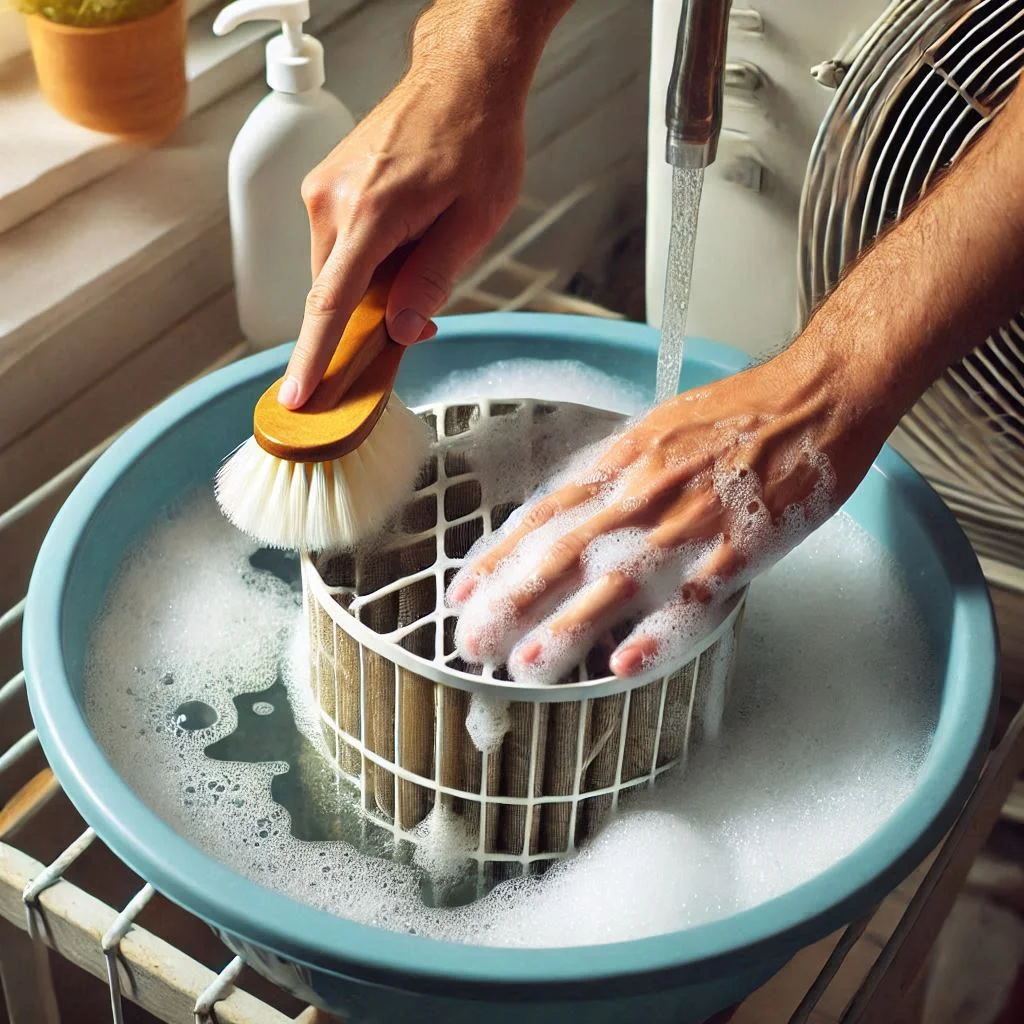
Reinstall the Filter
Once the filter is cleaned, rinsed, and thoroughly dried, it’s time to reinstall it. Ensure that the filter is completely dry before putting it back into the unit to avoid mold growth or water damage.
Align the filter properly with the filter compartment and slide or secure it back in place. Make sure it fits snugly and is positioned in the correct direction. Some filters have an airflow direction indicator, so check the label to ensure it’s installed correctly for maximum efficiency.
After reinstalling the filter, close the cover or panel and turn the air conditioner back on. It’s a good idea to check the unit’s performance to ensure it’s operating smoothly and efficiently after the cleaning.
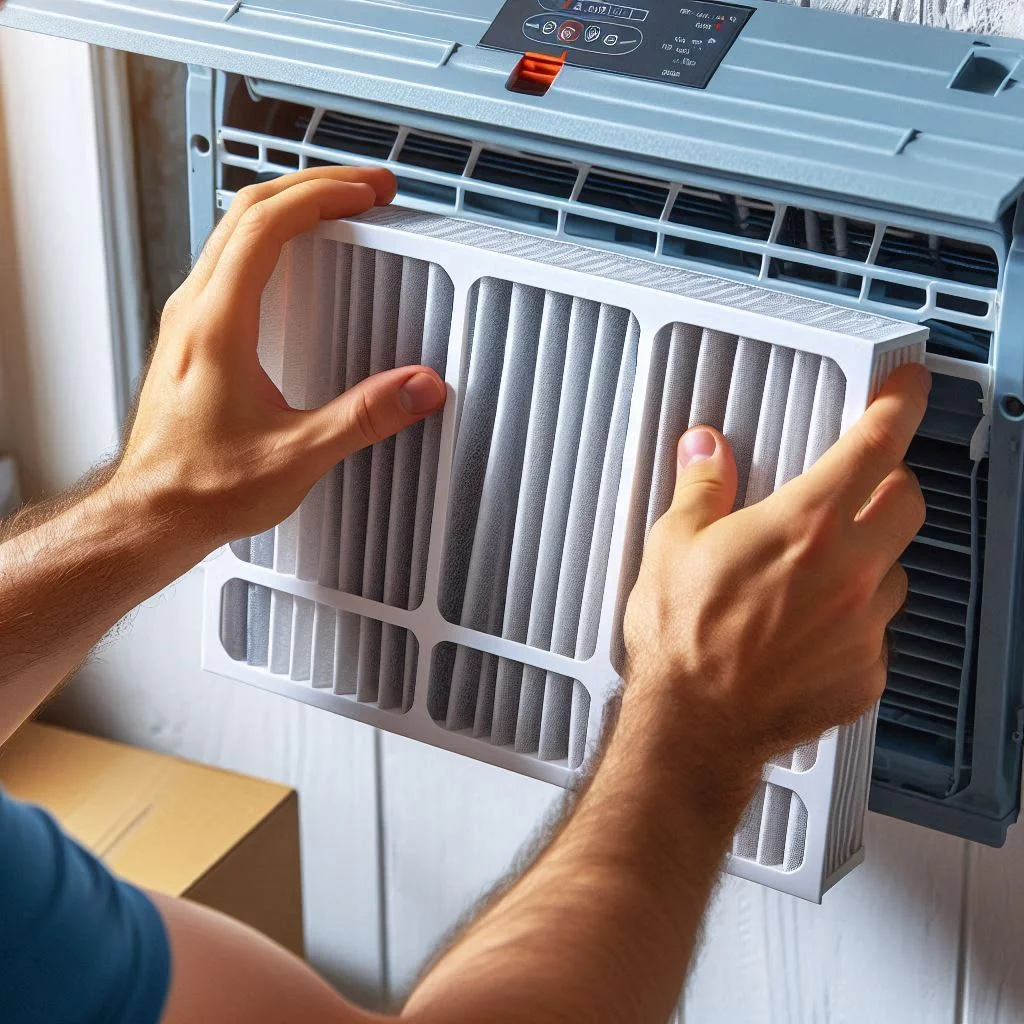
Types of Air Conditioner Filters and Cleaning Methods
Washable Filters
Washable filters are reusable and designed to be cleaned and reused multiple times. These filters are typically made from materials like aluminum mesh, polyester, or foam. The benefit of washable filters is that they are more eco-friendly and cost-effective in the long term, as they do not need to be replaced frequently.
Cleaning Method for Washable Filters:
- Turn off the AC and remove the filter as instructed in the user manual.
- Vacuum the filter to remove loose dust and debris.
- Soak the filter in warm, soapy water for 10–15 minutes to break down any built-up grime.
- Scrub gently with a soft brush or cloth if necessary.
- Rinse the filter thoroughly with clean water to remove soap residue.
- Let the filter dry completely before reinstalling it.
These filters require a gentle cleaning process to maintain their structural integrity. Avoid using harsh chemicals or high-pressure water, which can damage the filter material.
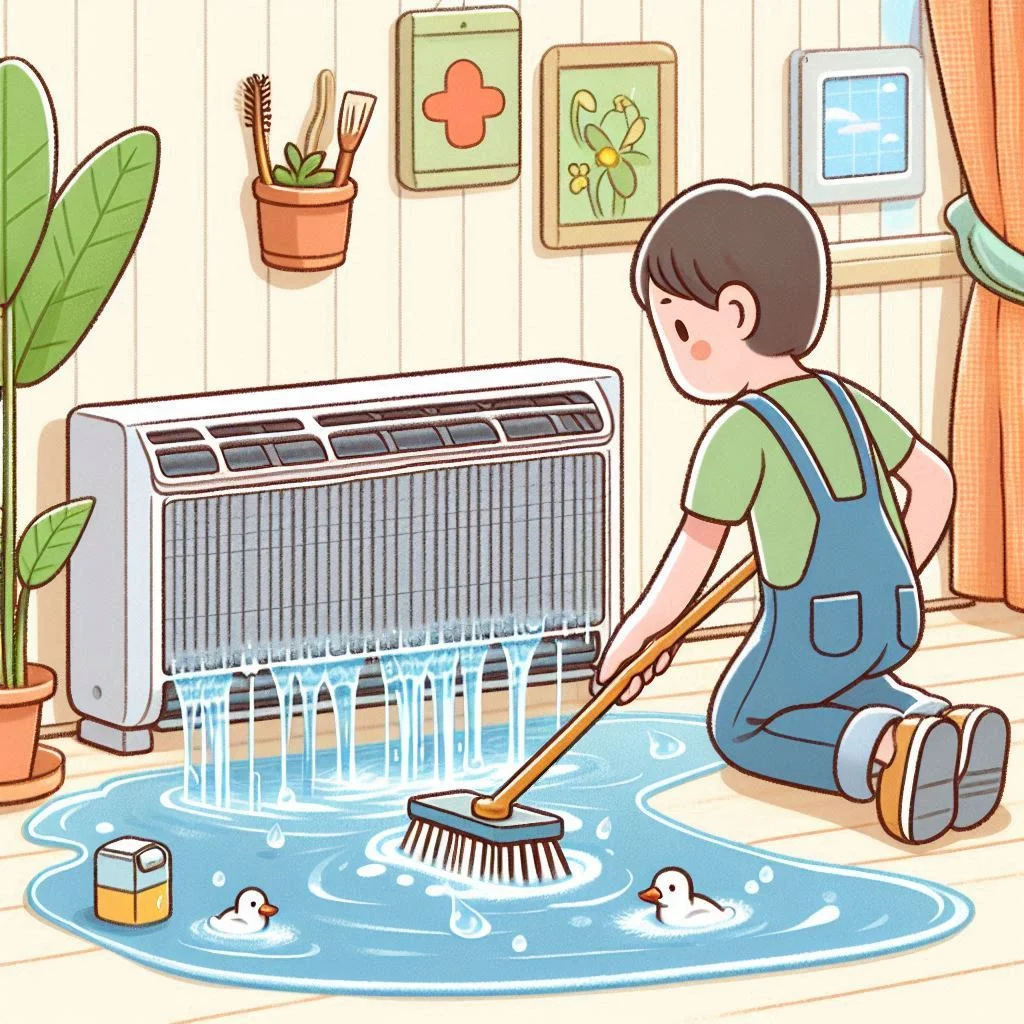
Disposable Filters
Disposable filters are designed for single-use and should be replaced when they become dirty or clogged. These filters are typically made from fiberglass or pleated paper. Disposable filters are convenient and low-maintenance but need to be replaced regularly to ensure efficient air quality and airflow in your air conditioner.
Cleaning Method for Disposable Filters: Since disposable filters are not designed to be cleaned and reused, they must be replaced once they become too dirty. However, you can prolong the lifespan of disposable filters by vacuuming them gently to remove loose debris before they reach the point of full replacement.
Replacement Schedule:
- Replace disposable filters every 30–90 days depending on the level of use and the manufacturer’s recommendations.
- Consider using higher MERV (Minimum Efficiency Reporting Value) rated filters for better air quality.
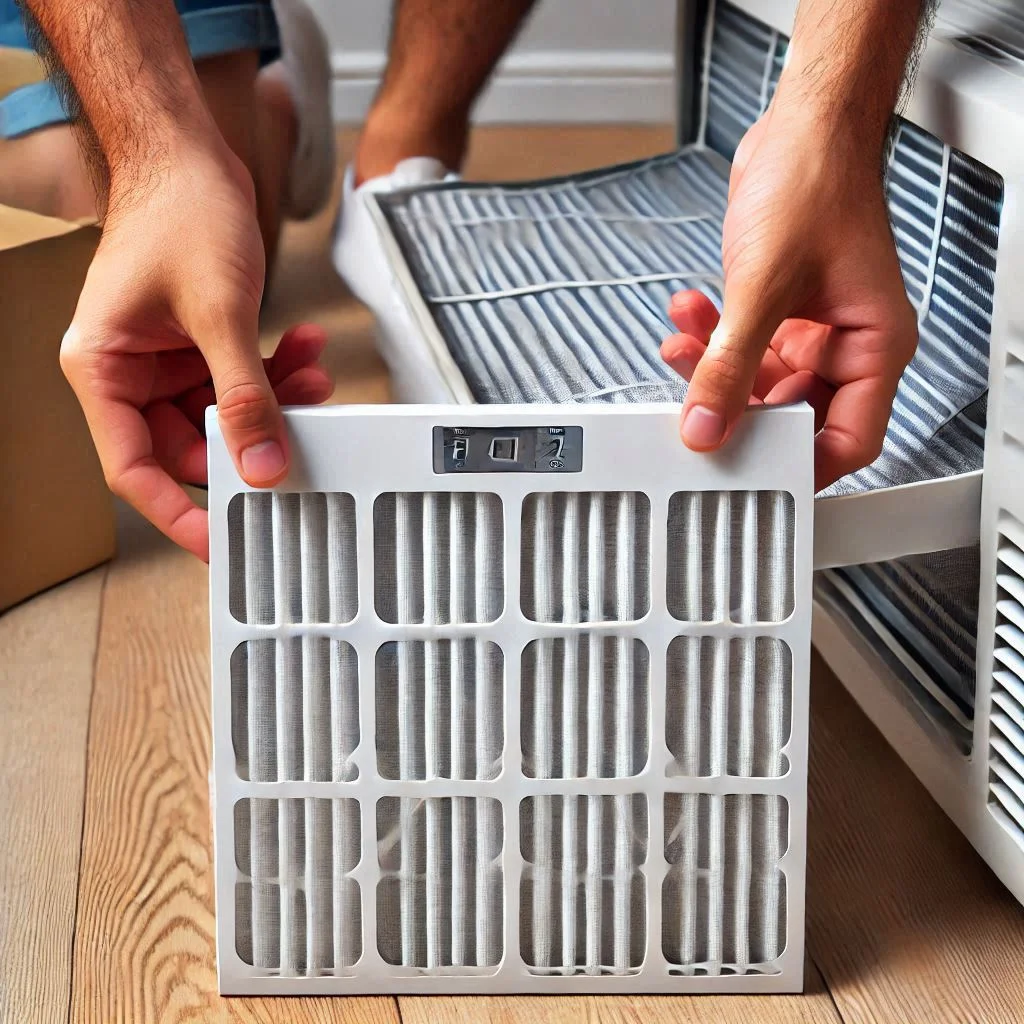
Specialized Filters
Specialized filters are designed for specific needs, such as improving air quality, reducing allergens, or trapping fine particles. Some common types of specialized filters include:
- HEPA (High-Efficiency Particulate Air) Filters: These are capable of trapping tiny particles, such as dust, pollen, and pet dander, making them ideal for people with allergies or respiratory issues.
- Activated Carbon Filters: These filters absorb odors, gases, and chemicals, improving air quality in homes with strong smells like cooking or smoke.
- UV Light Filters: These filters use ultraviolet light to kill bacteria, mold, and other microorganisms, providing an extra layer of protection for your indoor air.
Cleaning Method for Specialized Filters:
- HEPA Filters: Usually, these need to be replaced rather than cleaned. If you have a washable HEPA filter, follow the same cleaning method as for washable filters.
- Activated Carbon Filters: These can’t be washed, but you can vacuum the surface gently. Once the filter is saturated with odors, it must be replaced.
- UV Light Filters: UV filters require periodic maintenance, such as cleaning the bulbs and replacing the UV lamp every 6–12 months to maintain optimal function.
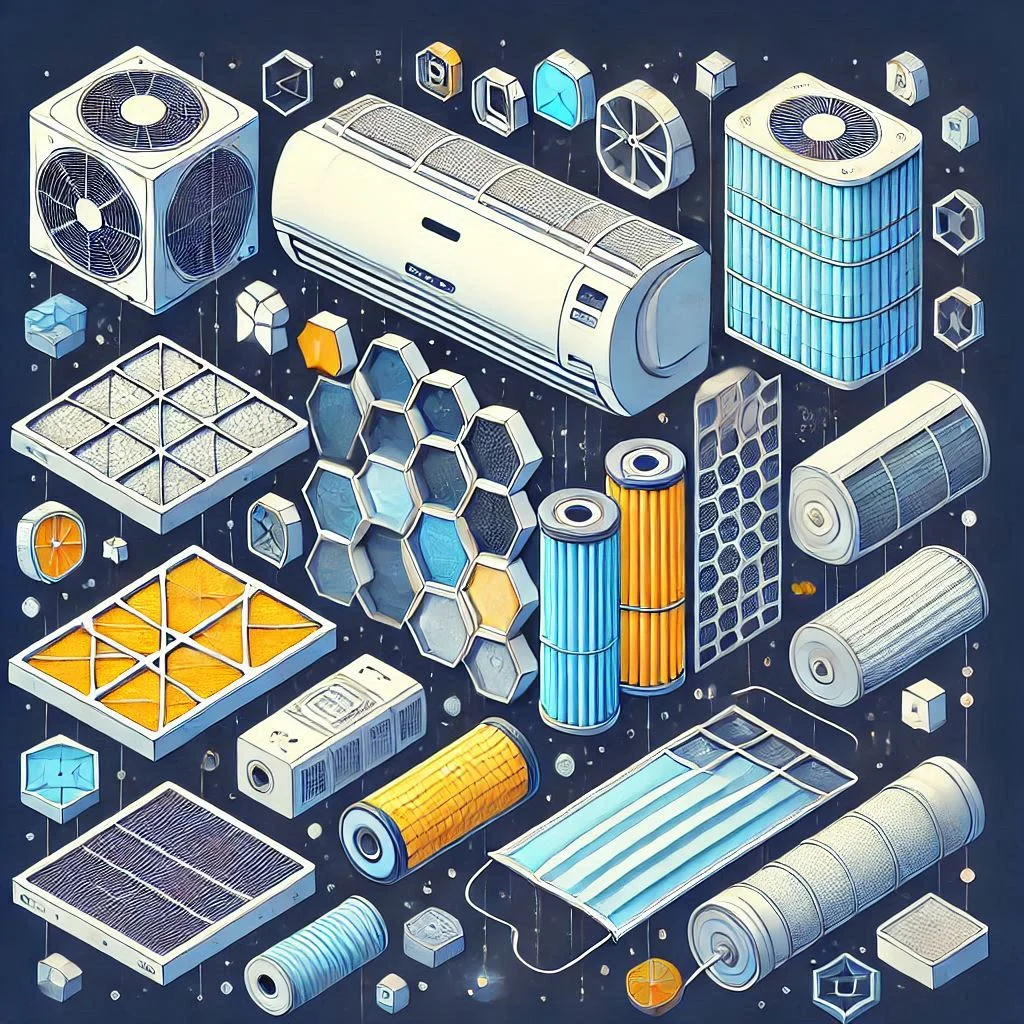
Additional Maintenance Tips for Your Air Conditioner
Cleaning Other Components (Coils, Condenser, etc.)
Proper air conditioner maintenance goes beyond just cleaning the filter. To ensure that your AC operates efficiently, it’s essential to clean other critical components such as the evaporator coils, condenser coils, and drain lines. These parts can accumulate dirt and grime over time, which can reduce the system’s efficiency, lead to overheating, and even cause system failure.
1. Evaporator Coils: The evaporator coils are responsible for absorbing heat from the air. If they become coated with dust and debris, they will not be able to absorb heat effectively, reducing the cooling capacity of your AC. To clean the coils:
- Turn off the AC unit and access the evaporator coil.
- Use a soft brush or compressed air to remove dust and dirt from the coils.
- Apply a coil cleaner designed for evaporator coils to break down stubborn grime, then wipe away excess cleaner.
2. Condenser Coils: The condenser coils release the heat absorbed by the evaporator coils. If they become clogged with dirt, the system will struggle to release heat, causing it to overheat. To clean the condenser coils:
- Power off the AC and remove any debris surrounding the unit.
- Use a coil cleaner to break down dirt and grime from the coils.
- Gently clean the coils with a soft brush, ensuring you don’t bend the fins.
3. Drain Line: A clogged drain line can lead to water buildup, which can cause mold growth and damage your AC. To clean the drain line:
- Locate the drain line and use a wet/dry vacuum to clear any debris.
- Pour a mixture of vinegar and water down the drain line to prevent mold growth.
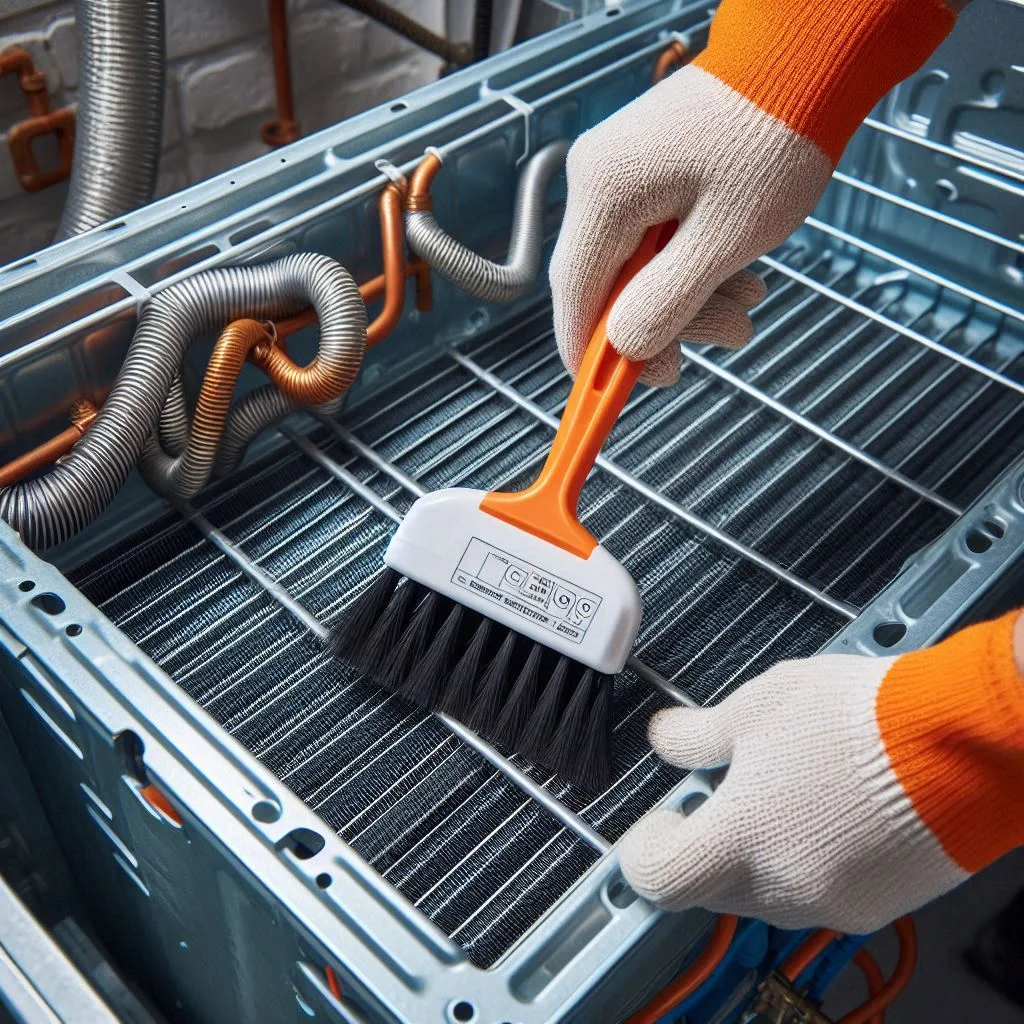
Ensuring Optimal Air Flow
Optimal air flow is crucial for the efficiency of your air conditioner. Without proper airflow, your AC will have to work harder to cool your space, leading to higher energy bills and wear on the system.
1. Clear Obstructions Around the AC Unit: Ensure that there are no obstacles blocking the air intake or exhaust areas of your air conditioner. Keep furniture, curtains, or other objects away from the unit to allow for unrestricted airflow.
2. Adjust the Vents and Registers: Check the direction of the air vents inside your home. Adjust them to distribute the cool air evenly throughout the room. Also, inspect the ductwork for any leaks or blockages that may reduce airflow.
3. Clean the Air Vents: Just as you clean the air filter, it’s important to clean the air vents and registers. Use a vacuum cleaner with a hose attachment to remove dust and dirt from the vents. Clean both the visible parts and any duct openings you can access.
4. Ensure Proper Insulation: Proper insulation of the ductwork is essential for maintaining optimal airflow. If the insulation around your ducts is damaged or missing, it can lead to significant energy loss. Repair or replace any damaged insulation.
5. Use a Programmable Thermostat: A programmable thermostat can help regulate the temperature more efficiently by adjusting the temperature based on your daily schedule. This not only saves energy but also prevents overworking the AC system, helping it maintain consistent airflow.
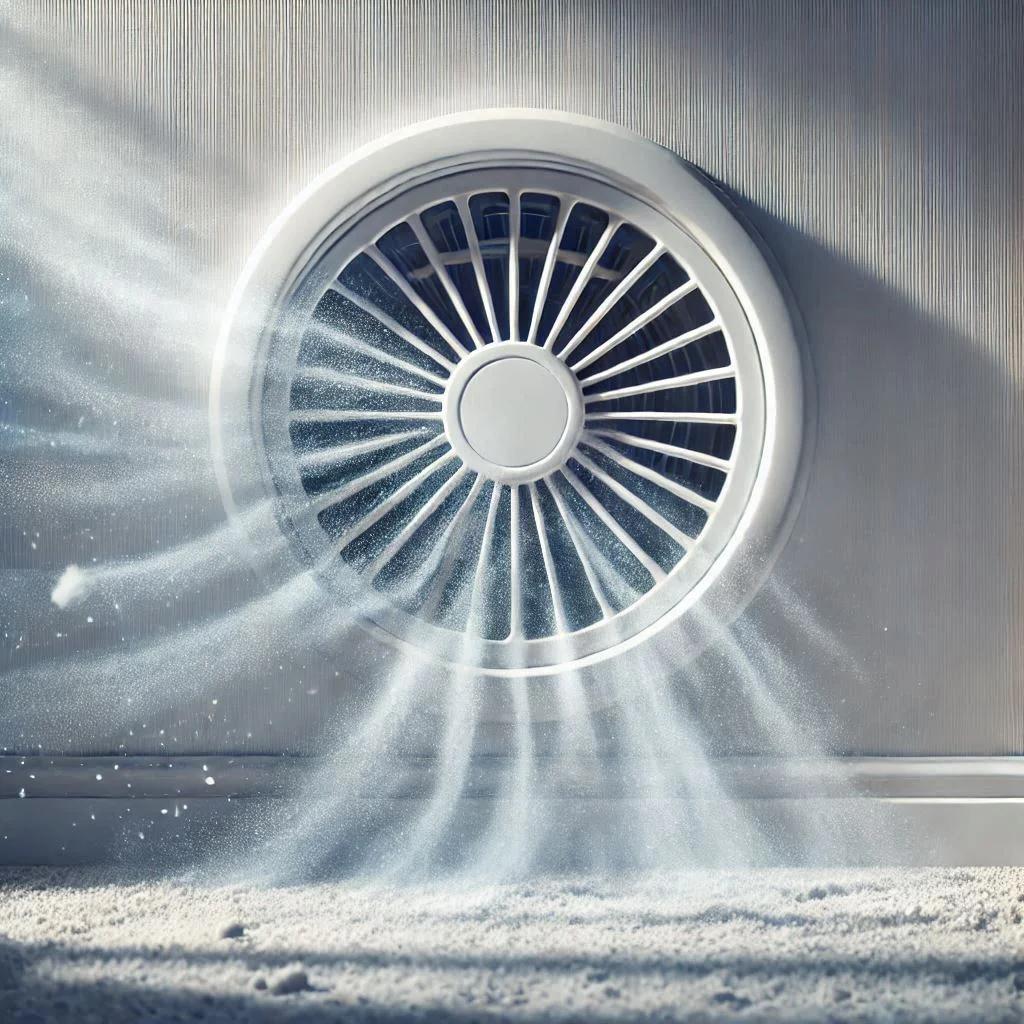
FAQ: How to Clean an Air Conditioner Filter
1. How often should I clean my air conditioner filter?
Cleaning your air conditioner filter is crucial for maintaining optimal performance and air quality. The recommended frequency for cleaning your AC filter depends on the type of filter and how often your AC is used. For standard filters, cleaning once every 1–2 months is sufficient. However, if you have pets, allergies, or live in an area with high levels of dust or pollution, you may need to clean the filter more often, such as every 3–4 weeks.
2. Can I clean my air conditioner filter without removing it?
While it’s possible to clean some air conditioner filters without fully removing them, it is always better to remove the filter for a more thorough cleaning. Removing the filter allows you to vacuum and wash it properly, ensuring that all dirt and debris are removed. Skipping this step may leave dust behind, reducing the filter’s effectiveness in improving air quality and airflow.
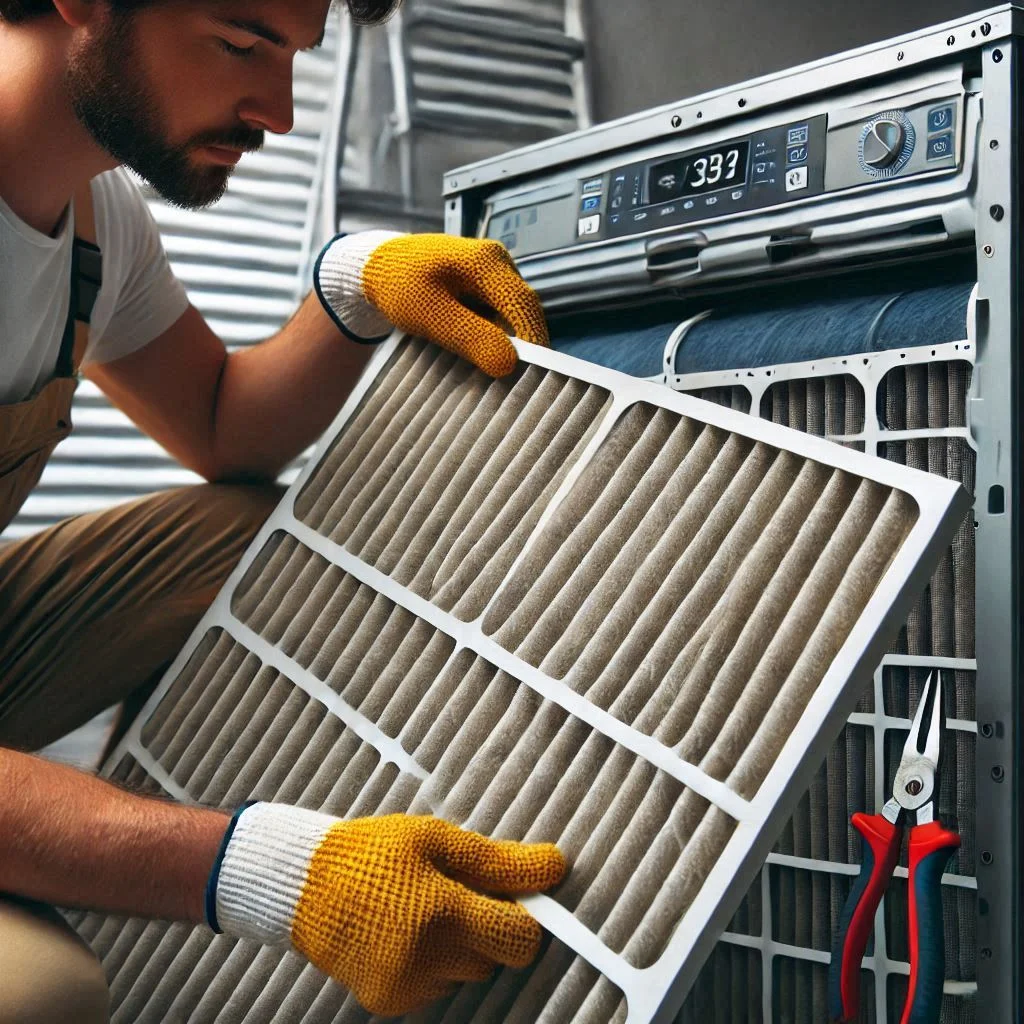
3. What tools do I need to clean my air conditioner filter?
Cleaning an air conditioner filter requires basic tools and materials, including:
- A vacuum cleaner (with a brush attachment for light dirt).
- Warm soapy water or a mild cleaning solution.
- A soft brush or cloth to remove stubborn debris.
- A water spray bottle (optional, for rinsing).
- A clean, dry towel for drying the filter.
By having these tools on hand, you can ensure a safe and effective cleaning process for your air conditioner filter.
4. How do I know if my air conditioner filter needs to be replaced instead of cleaned?
If your filter is damaged, discolored, or too clogged to clean effectively, it’s time to replace the filter instead of cleaning it. A filter that is no longer performing well can strain the air conditioner, reduce efficiency, and potentially harm the system. Check the manufacturer’s recommendations for the lifespan of your filter. If the filter appears to be past its prime, it’s best to replace it.
5. Can I wash a disposable air conditioner filter?
No, disposable filters are not designed to be washed and reused. These filters should be replaced when they become clogged. Attempting to wash a disposable filter can damage the filter and reduce its ability to trap particles. However, you can vacuum disposable filters gently to remove surface dust, but once they are saturated with dirt, they need to be replaced.
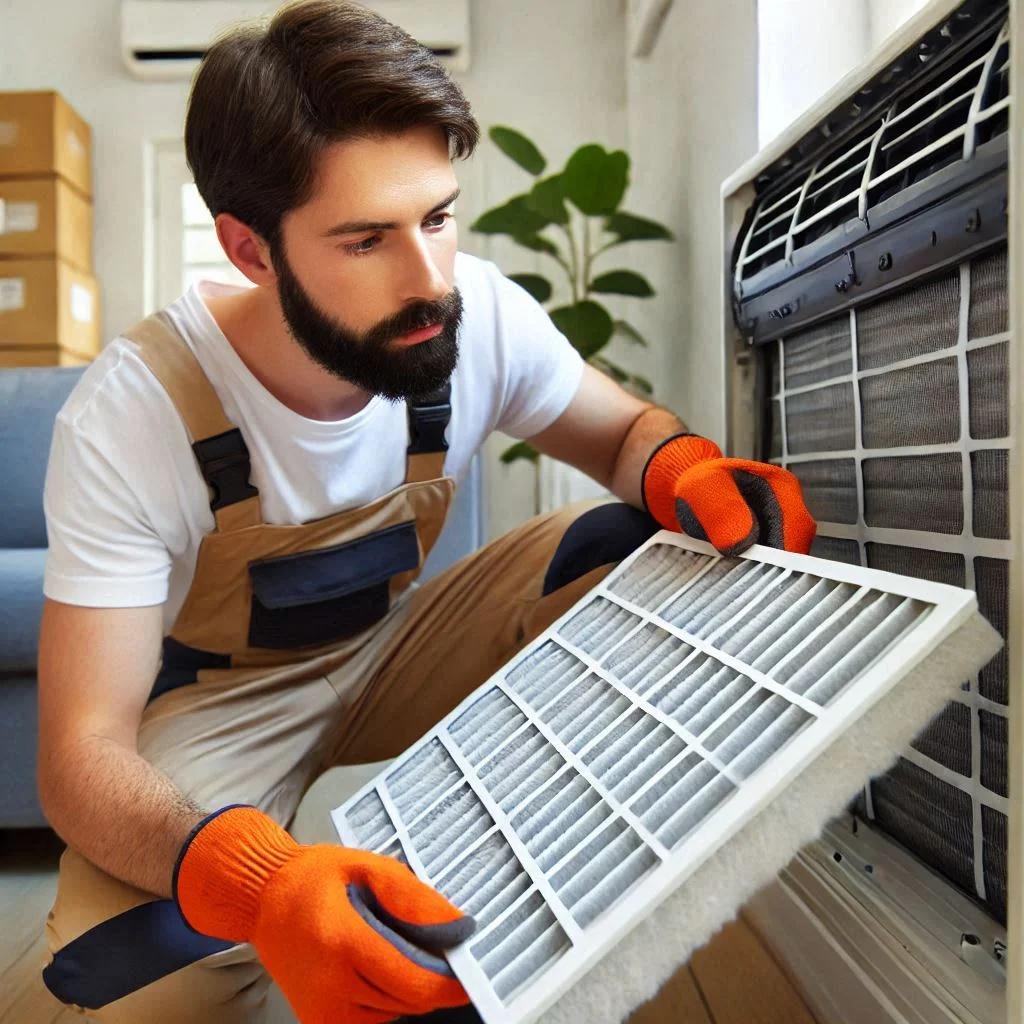
6. How do I clean a washable air conditioner filter?
To clean a washable air conditioner filter, follow these steps:
- Turn off the AC unit and carefully remove the filter.
- Vacuum the filter gently to remove any loose dirt.
- Wash the filter with warm, soapy water and let it soak for about 10–15 minutes.
- Rinse thoroughly with clean water to remove soap residue.
- Allow the filter to dry completely before reinstalling it to avoid mold and mildew growth.
7. Why is cleaning the air conditioner filter important?
Regularly cleaning the air conditioner filter offers numerous benefits, including:
- Improved air quality by removing dust, pollen, and allergens.
- Better airflow, which ensures the system is working at peak efficiency.
- Energy savings as the system doesn’t have to work as hard to cool the air.
- Extended lifespan of your AC unit by preventing strain on the motor and other components.
A clean filter also helps maintain comfortable indoor temperatures, making it essential to integrate cleaning into your regular maintenance routine.

Conclusion:
In conclusion, keeping your air conditioner filter clean is essential for maintaining the efficiency, performance, and longevity of your system. By following the step-by-step guide, understanding the different types of filters, and applying regular maintenance practices, you can significantly improve indoor air quality, reduce energy consumption, and prevent costly repairs. Whether you’re cleaning the filter yourself or considering professional HVAC services, ensuring your AC system stays in top condition will lead to better comfort and savings. Stay proactive with your air conditioner care, and it will continue to keep you cool and comfortable throughout the year.

